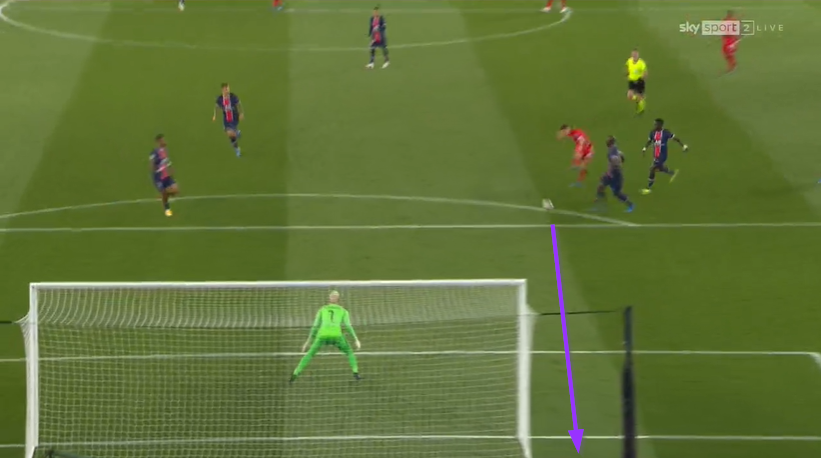
Dalmatia through history.
Thread:
Part I: The Name
The name Dalmatia is today well known throughout the Globe. Average European knows for sure it is southern part of Croatia, a little less average don't know that „Croatian part“ but relate it as tourist brand and destination.⬇️
Thread:
Part I: The Name
The name Dalmatia is today well known throughout the Globe. Average European knows for sure it is southern part of Croatia, a little less average don't know that „Croatian part“ but relate it as tourist brand and destination.⬇️

Throughout the globe the term Dalmatia is recognized by one sort of dogs, a Dalmatian, which originates from it.
Walt Disney made this enormous free advertisement so even an average American at least heard of it.⬇️



Walt Disney made this enormous free advertisement so even an average American at least heard of it.⬇️




Dalmatia indeed is a most southern and most beautiful region of Croatia with rich historical and cultural heritage.
In this thread you will read few interesting informations from the past of Dalmatia, maybe unknown to you. ⬇️
In this thread you will read few interesting informations from the past of Dalmatia, maybe unknown to you. ⬇️
Origins of the name Dalmatia.
The name Dalmatia is of Roman origin, „born“ in 1st century AD.
But the core of this name is much much older; we don't know how much older. ⬇️
The name Dalmatia is of Roman origin, „born“ in 1st century AD.
But the core of this name is much much older; we don't know how much older. ⬇️
First written traces about this region were left by ancient Greeks.
They sailed into the Adriatic in the 4th century BC and founded several of their colonies, on the islands and the coast.
This is actually the beginning of the history of this area. ⬇️

They sailed into the Adriatic in the 4th century BC and founded several of their colonies, on the islands and the coast.
This is actually the beginning of the history of this area. ⬇️


Take a closer look at this map of the Greek colonies!
Do you see the similarity of today’s modern names after more than 2300 yrs have passed?
Korkyra=Korcula, Aspalathos=Split, Traugiron=Trogir, Pharos=Hvar, Issa=Vis, Buthoe=Budva, etc.
But, let's get back to Dalmatia... ⬇️
Do you see the similarity of today’s modern names after more than 2300 yrs have passed?
Korkyra=Korcula, Aspalathos=Split, Traugiron=Trogir, Pharos=Hvar, Issa=Vis, Buthoe=Budva, etc.
But, let's get back to Dalmatia... ⬇️

The Greeks were not conquerors; they established colonies in areas not so densely populated and began (trade) interaction with the hinterland.
Someone had already lived in that hinterland before them, right? The natives.
Greeks used to call all these natives as ILLYRIANS. ⬇️
Someone had already lived in that hinterland before them, right? The natives.
Greeks used to call all these natives as ILLYRIANS. ⬇️
They were not one unique people, rather a lot of tribes, groups with different customs and different names.
But the Greeks called them with common mark/name – Illyrians.
The closest analogy would be the common name Indians for all native people of Northern America.⬇️
But the Greeks called them with common mark/name – Illyrians.
The closest analogy would be the common name Indians for all native people of Northern America.⬇️
One of these Illyrian tribes were Delmats or Dalmats (Delmatae/Dalmatae).
They lived in central part of Adriatic coast, roughly between modern rivers of Krka and Cetina.
Although they were originally from hinterland (modern day Duvanjsko polje, engl. Field of Duvno). ⬇️
They lived in central part of Adriatic coast, roughly between modern rivers of Krka and Cetina.
Although they were originally from hinterland (modern day Duvanjsko polje, engl. Field of Duvno). ⬇️

Then we come to the Romans (ca. 2nd century BC).
They were not peaceful traders. When they came, their intention was to conquer.
And that means a lot of wars and fights with local tribes. Romans took over the Greek name for them – Illyrians. ⬇️
They were not peaceful traders. When they came, their intention was to conquer.
And that means a lot of wars and fights with local tribes. Romans took over the Greek name for them – Illyrians. ⬇️

The Roman armies were the most organized in then Europe (=World). "Illyrian" tribes fell one after another.
However, in contact with the Dalmats, the Romans felt what the term "to be punched in the head” means; their legions suffered several defeats. ⬇️

However, in contact with the Dalmats, the Romans felt what the term "to be punched in the head” means; their legions suffered several defeats. ⬇️


Yet, no one could resist the Roman army in long term then, not even the Illyrians.
Romans organized all conquered areas into provinces.
Our regions were organized into the province of Illyricum.
The name is, logically, derived from the conquered "Illyrians". ⬇️
Romans organized all conquered areas into provinces.
Our regions were organized into the province of Illyricum.
The name is, logically, derived from the conquered "Illyrians". ⬇️
Province of Illyricum grew with the Roman conquests.
By conquering and annexing the Pannonian plains into Illyricum, it became simply too large.
After the Illyrian uprising (6-9 AD), the Romans simply had to divide it into two smaller provinces for better organization. ⬇️
By conquering and annexing the Pannonian plains into Illyricum, it became simply too large.
After the Illyrian uprising (6-9 AD), the Romans simply had to divide it into two smaller provinces for better organization. ⬇️
The northern part of Illyricum has since been organized as a province called Pannonia, after the Pannonian tribes. ⬇️ 

And because the vivid memory of strong resistance and enormous courage of native Dalmats Romans decided to name the southern part of the province, the original Illyricum as DALMATIA.
It was the 9th. A.D. ⬇️
It was the 9th. A.D. ⬇️

And so DALMATIA came into being.
About the transformation of ancient Dalmatia into what Dalmatia is today in the following threads.
#historyofCroatia #historyofCroats #hrvatskapovijest #dalmatia #dalmacija #croatia #hrvatska
About the transformation of ancient Dalmatia into what Dalmatia is today in the following threads.
#historyofCroatia #historyofCroats #hrvatskapovijest #dalmatia #dalmacija #croatia #hrvatska
Version in Croatian language:👇🏼
https://twitter.com/Antimon_Zg/status/1338585613692493830?s=20
• • •
Missing some Tweet in this thread? You can try to
force a refresh














